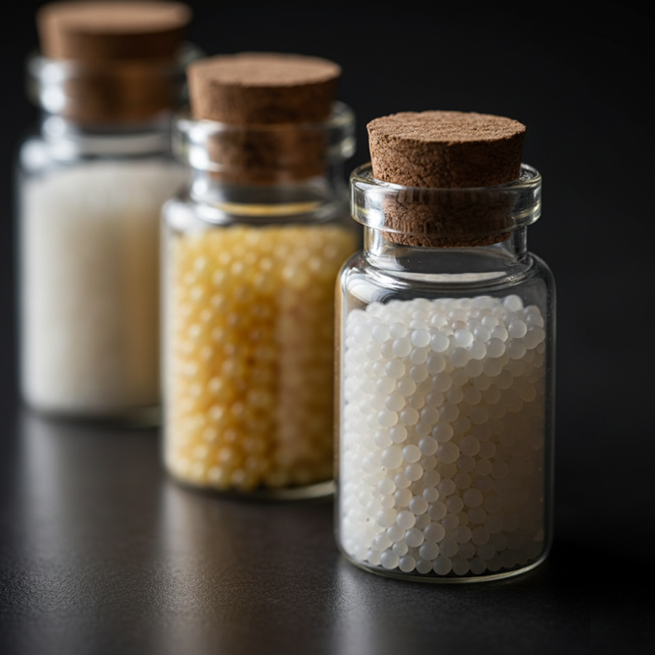
Types of Resins Used in Water Treatment
Resins used in water treatment are specialized materials that play a pivotal role in water purification by removing contaminants and improving water quality. These resins can be classified into two main types: natural and synthetic. While natural resins, derived from plant sources, have historical applications, synthetic resins dominate modern water treatment due to their superior performance and versatility in a variety of processes, particularly ion exchange.
This makes them essential in diverse industries, from municipal water supplies to wastewater treatment and industrial manufacturing. Synthetic resins are further divided into categories such as ion exchange resins, absorbent resins, and environmentally friendly resins. Ion exchange resins are characterized by their ability to selectively remove specific ions from water. Cation exchange resins effectively soften hard water by removing calcium and magnesium, while anion exchange resins target harmful anions such as nitrates and sulfates. In addition, recent innovations have led to the development of environmentally friendly resins that use recycled or plant-based materials, reducing the environmental impacts associated with traditional resin production.
Types of Resins
Different types of ion exchange resins are specifically formulated for various uses. The ionized functional group attached to their hydrocarbon network causes each type of resin to behave differently. The most common types can be identified as follows:
- Strong acid cations (SAC)
- Weak acid cations (WAC)
- Strong base anions (SBA)
- Weak base anions (WBA)
Strong acid cation resins (SAC)
SAC resins are highly ionized, neutralizing strong bases and converting neutral salts to corresponding acids. The ionized group is attached to a sulfonic acid (-SO3H) group. These resins exchange monovalent cations (Na+ and H+) across the entire pH range.
The primary applications of SAC resins are water softening and demineralization. In the demineralization process, SAC resins remove all cations present in raw water.
Weak Acid Cationic Resins (WAC)
WAC resins are widely used in water softening and dealkalization. WAC can remove approximately 80% of temporary hardness. However, they are unable to remove all cations in many water systems. Compared to SAC systems, WAC resin systems have superior regeneration performance, helping to reduce the amount of acid used to regenerate the resin. These resins ionize to the carboxyl group (COOH) and remove the cations. These resins have high oxidation resistance and mechanical durability.
Strong Base Anionic Resins (SBA)
SBA resins neutralize strong acids, converting neutral salts to corresponding bases. SBA resins are also highly ionized, like SAC resins, and their hydroxide form is used to deionize water across the entire pH range. Due to the two different functionalities of the quaternary ammonium groups, they are named Type I (containing three methyl groups) and Type II (containing one methyl group).
- Stability: Type I > Type II
- Ability to remove weakly ionized acids – Type I > Type II
- Regeneration efficiency: Type I < Type II
Weakly basic anion (WBA) resins
The functionalities in WBA resins are combined with primary, secondary, and tertiary amine groups. These are represented by the formulas R-NH2, R-NHR’, and R-NR’2, respectively. WBA resins absorb acid. The ionization of WBA resins is strongly affected by pH.
R-NH2+HCl→R-NH3Cl
Applications of Resins in Water Treatment
The use of resins in water treatment encompasses a wide range of applications across various sectors, significantly improving water quality and safety. Resins are pivotal in processes designed to remove impurities, soften hard water, and balance water chemistry, playing critical roles in both industrial and municipal contexts.
Wastewater Treatment
In wastewater management, resins are used to treat and purify wastewater before it is released into the environment or reused. This process often involves removing organic compounds, heavy metals, and other contaminants. Large-porous resins, which effectively adsorb organic acids, are particularly useful in ensuring that wastewater meets environmental safety standards before discharge.
Municipal Water Supply
In municipal water supply systems, ion exchange resins are primarily used to soften hard water. This process is essential to make the water more suitable for domestic consumption and industrial applications. By exchanging hard ions, such as calcium and magnesium, with sodium ions, these resins effectively reduce water hardness, which can lead to limescale buildup in plumbing pipes and appliances.
Industrial Applications
In industrial settings, the use of resins is critical to maintaining machine efficiency and product quality. Industries such as power generation, food processing, and pharmaceuticals often require highly purified water to avoid contamination and equipment damage. Here, resins play a key role in removing contaminants that can negatively impact manufacturing processes. For example, in the food industry, removing heavy metals and organic impurities is essential to ensure product safety and compliance with health regulations.
Specialized Purification Technologies
Some resin applications target specific contaminants in water. For example, in areas affected by sulfate and nitrate pollution, resins have been developed. Specialized anion exchange resins selectively remove these harmful substances. Nitrate-selective resins are particularly important in situations where conventional resins may struggle to perform due to high sulfate concentrations. This allows for more effective purification without interference from competing ions. Furthermore, the CARIX process uses a combination of weakly acidic and strongly basic resins to selectively remove sulfate and calcium while preserving beneficial minerals in drinking water.
Environmental Considerations
With growing concerns about environmental sustainability, the use of high-efficiency resins in water treatment is increasing. Innovations in resin technology have led to systems that use less salt and water during the regeneration process, reducing environmental impacts such as soil salinization and water contamination. Communities are also moving toward centralized water purification systems to improve resource efficiency, which can further reduce the environmental footprint of water treatment operations.
Learn more about the importance of resins in water treatment.
Properties of Water Treatment Resins
Water treatment resins have a variety of chemical and physical properties that determine their effectiveness in purifying water and removing specific contaminants. Understanding these properties is essential for selecting the right resin for any water treatment application.
Ion Exchange Capacity
The ion exchange capacity of water treatment resins refers to the total number of exchange sites available for ion exchange. This can be affected by factors such as the resin’s structure and the chemical environment in which it operates. Capacity is typically expressed as dry weight, wet weight, or wet volume, allowing for comparison between different resin types. The effectiveness of a resin in removing ions from water is directly related to its capacity. Higher capacities enable greater removal of contaminants such as calcium, magnesium, and heavy metals.
Chemical Stability
Chemical stability is a key property of water treatment resins, especially when exposed to oxidizing agents and harsh pH conditions. Strong oxidizing chemicals, such as chlorine, hypochlorite, and peroxide, can degrade the resin’s structural integrity, reducing its lifespan and performance.
Cationic resins generally have higher stability than anionic resins, which are more susceptible to degradation at low pH levels and high temperatures. Prolonged exposure to high temperatures can weaken the polymer matrix in the resin, affecting its ion exchange capacity.
Thermal and Physical Properties
The thermal stability of water treatment resins varies between types. Some are capable of operating at temperatures up to 150°C (300°F), while others have lower temperature limits. For example, weakly based anionic resins may begin to degrade at around 60°C (140°F).
The physical strength of resins is also an important property, as stronger resins are less susceptible to compression and deformation during use, which can negatively impact performance. For example, large-network anionic resins exhibit greater resistance to organic fouling due to their more porous structure, enhancing their effectiveness in water treatment applications.
Ion Selectivity
Ion selectivity is another important property, as different types of resins are designed to target specific ions or contaminants. Cationic resins are typically used to remove positively charged ions, while anionic resins target negatively charged ions.
Choosing the right resin type based on ion selectivity significantly improves the efficiency and effectiveness of water treatment systems, allowing for tailored solutions to address specific water quality problems.
Conclusion
In conclusion, resins are an indispensable component of modern water treatment. They provide robust and customized solutions to complex water purification challenges. Industrial resins, particularly ion exchange resins, have revolutionized this sector with their ability to selectively remove contaminants, from softening hard water in municipal systems to purifying ultrapure water in sensitive industries such as pharmaceuticals.
Read also: Maximum Return on Investment (ROI): Managing Resin Efficiency to Reduce Operating Costs
A deep understanding of resin types, from cationic to anionic, along with their physical and chemical properties, is essential for achieving optimal performance. As concerns about water scarcity and quality continue to grow, advances in resin technology, such as high selectivity and environmentally friendly practices, are gaining vital importance. These innovations not only reduce the environmental impact of treatment processes but also ensure a sustainable supply of clean and safe water for various applications. The pivotal role of resins positions them as a key and future component of effective global water resource management strategies.

























